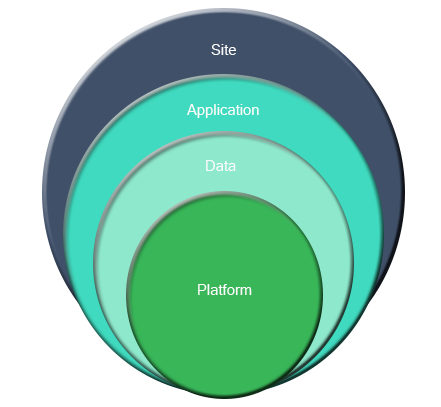GIT Approach To Business Continuity
Because ensuring the ongoing operation of your business – during and after unexpected events – is such a growing concern, GIS is ready to help customers develop Business Continuity solutions based on three technology cornerstones:
Business Impact Analysis
The services that help organizations develop a strategy to prepare people, processes and technologies for expected or unexpected events that could disrupt operationsHigh-availability systems
The technology that help maintain the availability of critical systems during a system failure or service outageDisaster-recovery systems
– The technology that assist in recovering critical systems and data after catastrophic events or disasters, GIS will help your business design and implement an infrastructure that can help ensure the continuity of your critical operations with solutions that are customizable, scalable and cost-efficient.Business Impact Analysis
GIT, along with its service partners, offers a comprehensive portfolio of business continuity services, including:
- • Risk-assessment and business-impact analysis
- • Business-continuity plan development
- • Disaster-recovery readiness assessment
- • Drop-ship and rapid equipment deployment services
- • Hot-site, cold-site, mobile-site workspace recovery services
- • Remote-application hosting and electronic-data vaulting
Four Levels of Continuity

Platform
The first level of continuity begins at the system level, with in-the-box availability features designed to help maximize uptime and enable rapid deployment of pre-configured replacement systems.
Data
Data availability can be achieved using robust storage systems and technologies designed to tolerate a variety of predictable failures, and recover information quickly and accurately after unexpected events.
Application
Application continuity is the most important facet of protecting end-users from the impacts of system or service outages. Eliminating single points of failure in the overall technology infrastructure helps assure that there is always a pathway to a working system for end users to access.
Site
Finally, organizations must think beyond the building and develop remote-recovery systems and services in the event of a building, site or metropolitan disaster. At the site level, geographic separation of redundant infrastructure and recovery facilities is the key.For more information, please get in touch with us.
- 1Disaster Recovery Solutions
- 2Business Continuity Solutions
- 3Data Migration & Cleansing
- 4Data Leakage Prevention
- 5Storage Designing
- 6Managed IT Services
- 7Service Desk
- 8Server Performance Monitoring
- 9Application Performance Monitoring
- 10Network Performance Monitoring
- 11Infrastructure As A Service
- 12Remote Infra Management
